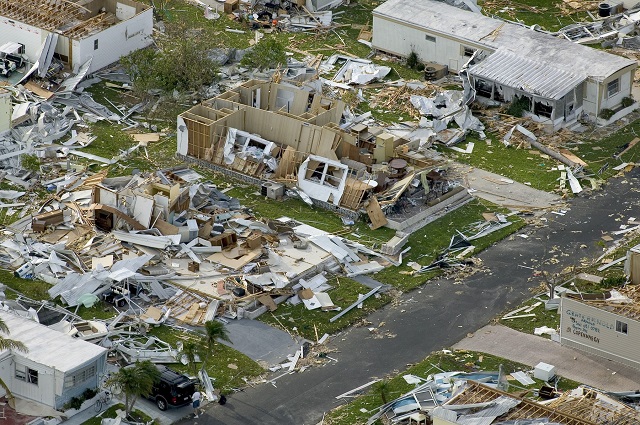News Story
(Below is a backup copy of the original article with as much credit to the publisher as well as the author that we can provide. By no means do we mean to violate any copyright laws. This page is appearing because someone indicated that the original story was unavailable.)
California's grid faces collapse as leaders push renewables, electric vehicles, experts say
California's electric grid faces years of potential blackouts and failure as state leaders continue pushing aggressive measures to transition to renewable energy sources, policy experts tell Fox News Digital.
The state's grid, which is still mainly powered by fossil fuels, is undergoing a major shift from natural gas and coal power to renewable power like wind and solar. Simultaneously, state officials are pushing an electrification of the economy, particularly in the transportation sector through electric vehicle mandates, which is expected to increase pressure on the grid.
"California is drastically cutting our dependence on fossil fuels and cleaning our air," Democratic California Gov. Gavin Newsom said in a November announcement unveiling the "world’s first detailed pathway to carbon neutrality."
The state's plan involves goals to slash greenhouse gas emissions by 85%, cut oil usage by 94% and deploy more solar and wind capacity over the next two decades. The aggressive plan to overhaul the state's energy system came three months after a top California environmental agency moved forward with a rule requiring all new vehicle sales to be electric by 2035.
GAVIN NEWSOM'S 2024 CHANCES COULD BE THREATENED BY CALIFORNIA'S ENERGY GRID STRUGGLES
California Gov. Gavin Newsom speaks during a press conference in San Francisco.
California Gov. Gavin Newsom speaks during a press conference in San Francisco. (Justin Sullivan/Getty Images)
In 2021, the most recent year with data, wind and solar accounted for about 25% of total electricity generated in California while natural gas accounted for more than 50% of in-state electricity generation. And 19% of new car sales in California were zero-emission vehicles, state data showed.
Experts told Fox News Digital environmental mandates implemented by Newsom and his administration have already created instability in the grid, an issue they argued would only get worse as existing fossil fuel power generation capacity was taken offline and replaced by intermittent sources.
"They're going to have to build an outrageous amount of wind and solar in a very short time if they want to accomplish their objectives of electrifying — our whole transportation sector and our whole home heating and cooling and residential sector," Edward Ring, a senior fellow with and co-founder of the California Policy Center, told Fox News Digital in an interview.
"There's a burden to the consumer that's going to get very heavy," he continued. "Even if they can pull it off without blackouts, the burden to the consumer is going to be ridiculous."
EXPERTS BLAME GREEN ENERGY POLICIES FOR EUROPE'S FULL-SCALE ENERGY CRISIS: 'A WARNING TO THE US'
Over summer, the California Independent System Operator (CAISO), the state's electric grid operator, repeatedly warned that high demand would significantly strain utility providers' ability to supply consumers electricity amid a heat wave.
CAISO issued an "energy emergency alert 3," its highest alert level, at one point in early September, saying residents should maximize conservation and expect rotating outages, and a flex alert for more than seven consecutive days. The operator also recommended residents refrain from charging electric vehicles to reduce stress on the grid.
Wind turbines are photographed in Palm Springs, California.
Wind turbines are photographed in Palm Springs, California. (Reuters/David Swanson)
"They already are suffering," said Myron Ebell, the director of the Competitive Enterprise Institute's Center for Energy and Environment.
"They're, in fact, telling people that they're going to start shutting off natural gas to houses and that they have to convert to electricity," he told Fox News Digital. "Then, they're forcing people to buy electric vehicles and they're going to stop selling internal combustion engine vehicles. That will add to the grid's demand."
In its annual report released in December, the North American Electric Reliability Corporation (NERC), a nonpartisan grid watchdog, stated that California faced a "high risk of energy or capacity shortfall" in coming years, particularly during summer months, as a result of traditional power plant retirements and increased demand.
CALIFORNIA URGES RESIDENTS AGAIN NOT TO CHARGE EVS ON BUSY TRAVEL WEEKEND
Ebell added that the intermittent nature of solar and wind, meaning they produce less power relative to their total generation capacity, could create instability. Green energy developers and government officials often highlight total capacity of new renewable power projects, but fail to mention how much actual power the project is expected to produce.
Solar panels, for example, produce just 25% and wind turbines produce 34% of their listed capacity, according to the Energy Information Administration (EIA). Coal, natural gas and nuclear power plants, meanwhile produce 49%, 54% and 93% of their listed capacity, respectively.
Solar panels are seen next to a Southern California Edison electricity station in Carson, California, on March 4, 2022.
Solar panels are seen next to a Southern California Edison electricity station in Carson, California, on March 4, 2022. (REUTERS/Lucy Nicholson)
"The only way the electrification of the transportation sector and of home heating and cooling can work is if the utility sector continues to build natural gas fired plants and looks to building nuclear plants and perhaps building new coal plants because the grid in these states that are pushing these policies is already overloaded," Ebell continued.
"As everybody moves to EVs, if it happens, the only way to do it is to find more baseload power and dispatchable power."
BIDEN'S ENERGY SECRETARY SAYS SHE SUPPORTS CALIFORNIA GAS VEHICLE BAN
The total capacity of the state's natural gas power plants has fallen 15% between 2013 and 2021, according to the California Energy Commission. In April, Newsom was forced to reverse course on plans to allow California's only remaining nuclear plant, which alone produces 9% of the state's electricity generation, to close.

